Top Recommended Detailed Designs to Promote and Adopt for Maximum Impact
A fascinating observation in everyday life: many seniors instinctively grasp the vertical support posts beneath stair handrails while climbing.
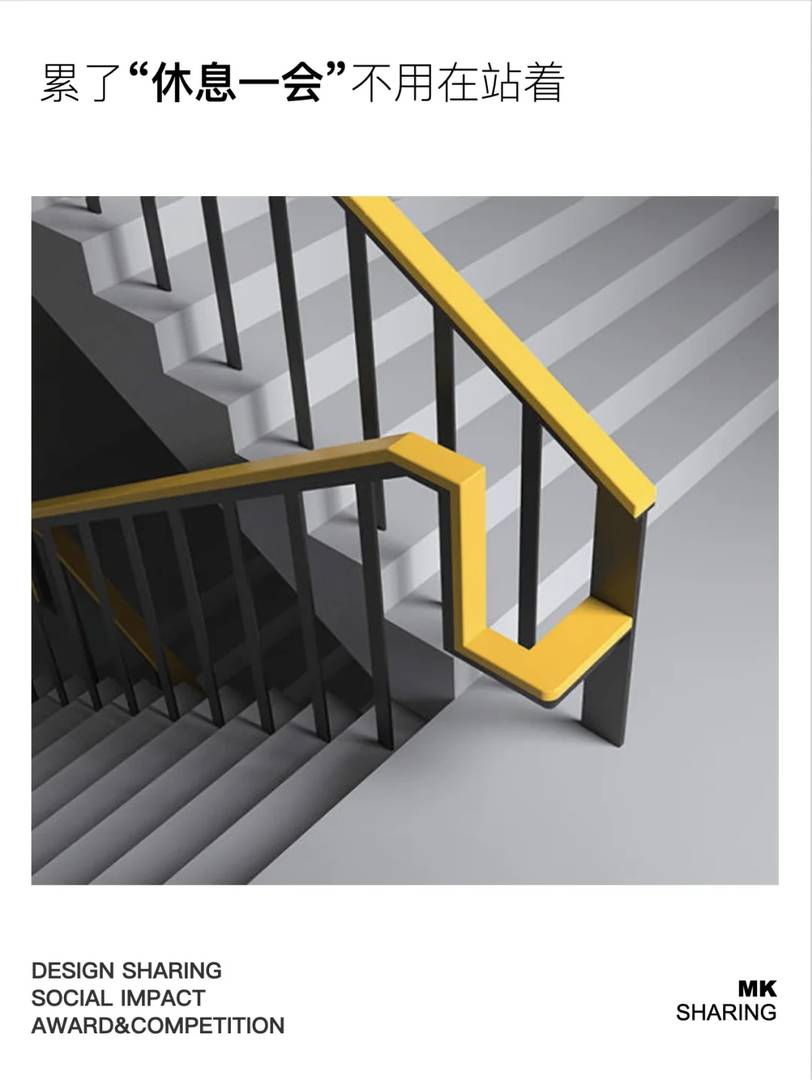
This sparks an important realization 💡
Conventional stair handrails harbor multiple design flaws – they’re often slippery and pose safety risks for older users. True design excellence lies in problem-solving. While right-angled handrail designs may require greater investment and construction effort, they brilliantly address these critical safety concerns when viewed through the lens of user needs.
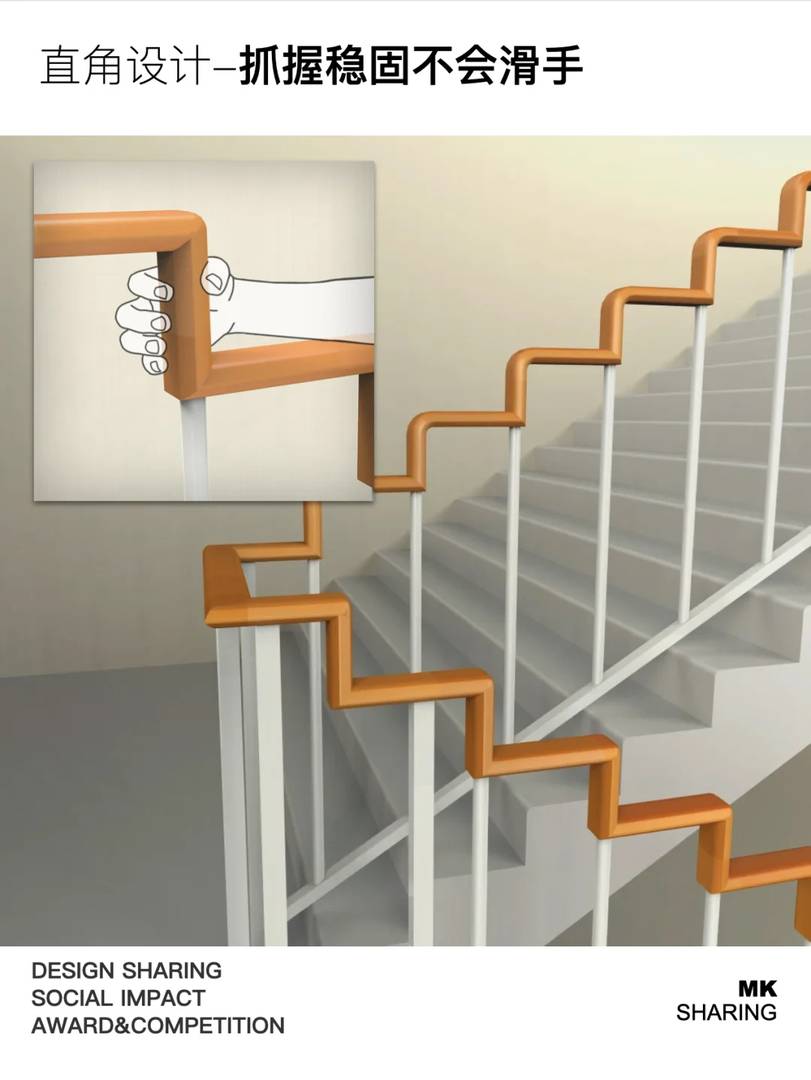
Source: yankodesign, iF award

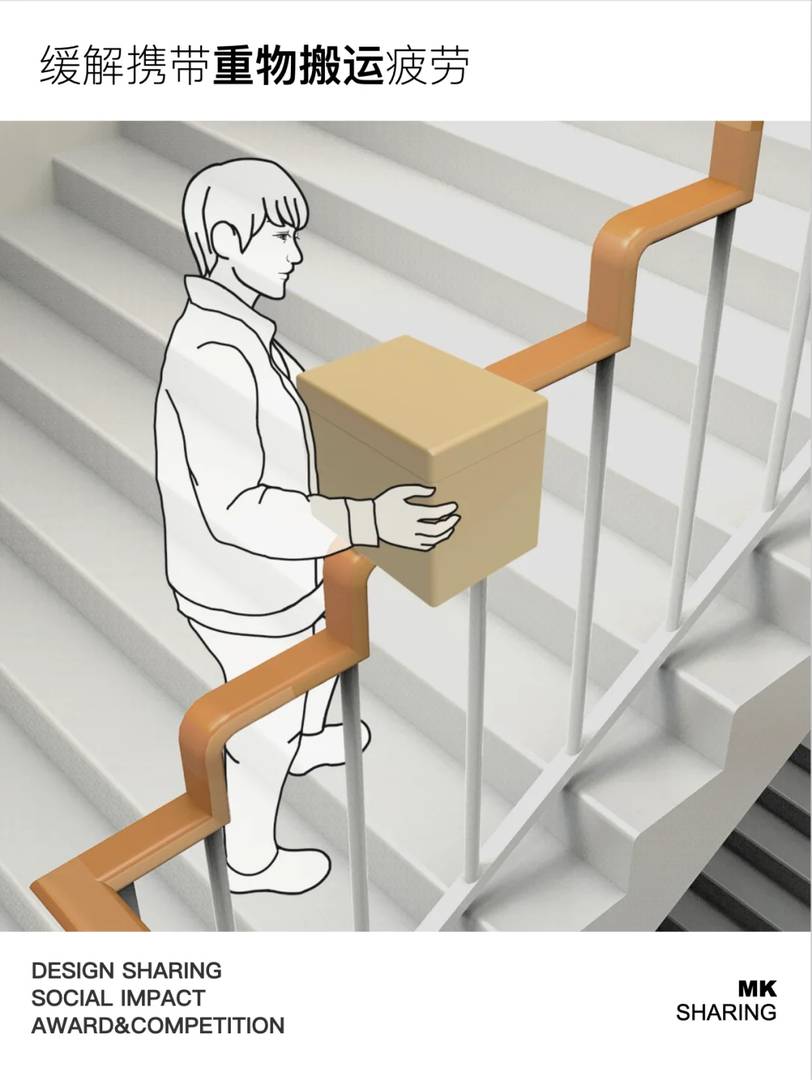

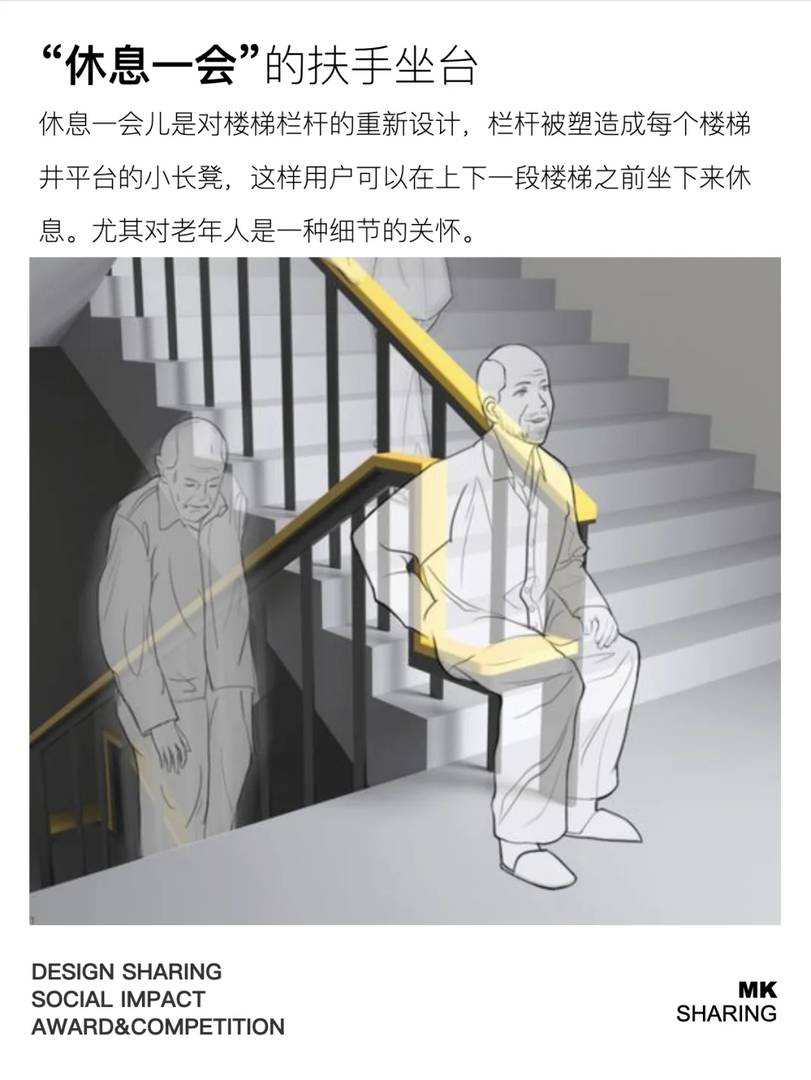
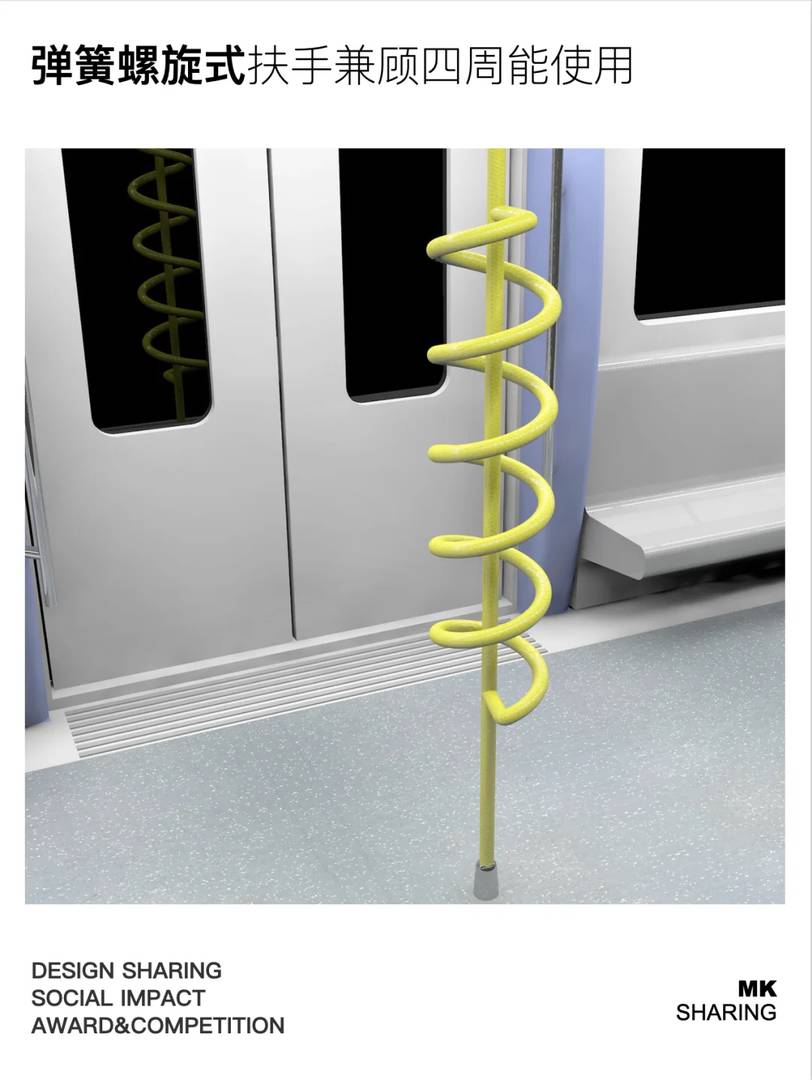
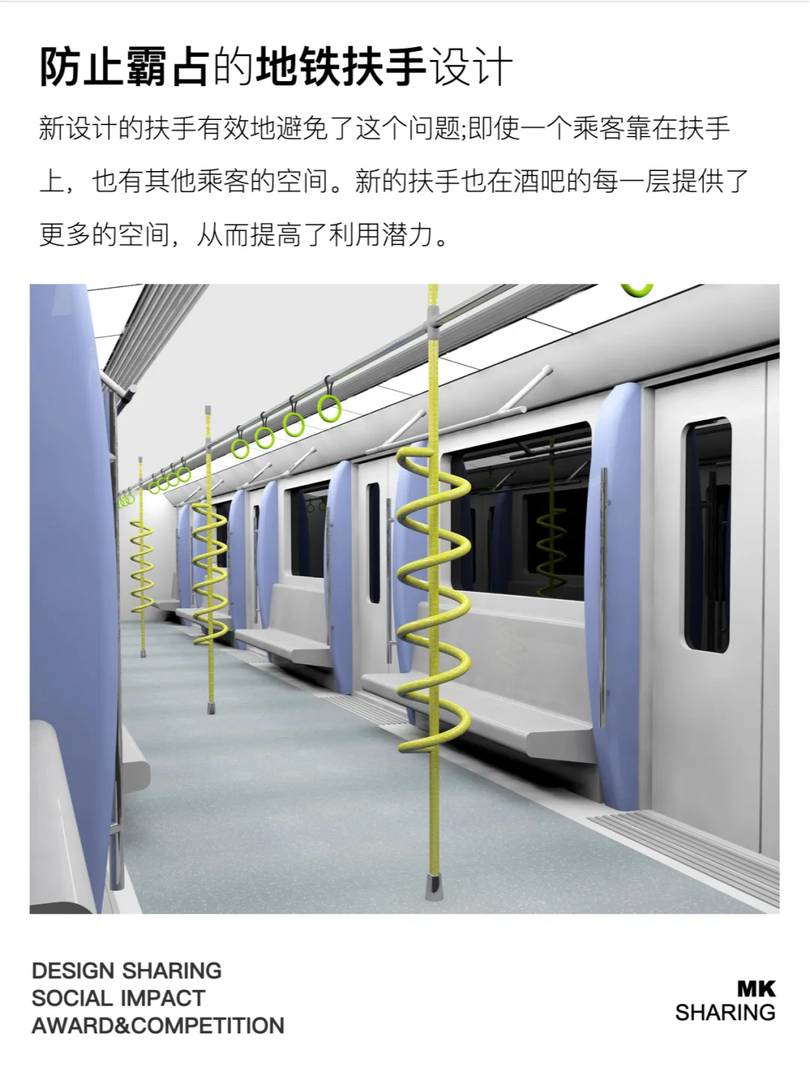
I totally agree that conventional handrails often overlook important safety details. The right-angled design does seem like a smart solution, especially for preventing slips and falls among older users. It’s interesting how such simple changes can make a big difference in usability. I wonder how common this design is in public spaces today.
I never thought about how traditional handrails could actually be dangerous for older people. The right-angled design really makes sense though—safety should always come first, even if it costs a bit more upfront. It’s crazy how something so simple can make such a big difference. I hope this becomes standard practice soon!
I never realized how flawed traditional stair handrails are until reading this. The right-angled design does make a lot of sense for safety, especially as someone who has seen elderly family members struggle with them. It’s great to see designers focusing on real user needs like this. I wonder if more public spaces will adopt these improved designs soon.
I totally agree that traditional handrails often fall short on safety. The angled design is such a simple yet effective solution—I never thought about it that way before reading this! It’s frustrating when common spaces overlook basic usability for older adults. Small changes like this could make a big difference.
I never thought about how conventional handrails could be improved until reading this. The right-angled design does make a lot of sense for safety, especially for older users who need that extra stability. It’s interesting how such simple changes can have a big impact on usability. I wonder if architects are starting to adopt this more widely.
I never thought about how traditional handrails could actually increase the risk of falls for seniors. The right-angled design makes so much sense though – it feels more secure and stable. It’s surprising that more public spaces haven’t adopted this yet. Safety should always be the top priority in design.
I totally agree that traditional handrails often fall short on safety. The right-angled design does seem like a smart solution, though I wonder how practical it is for all types of staircases. It’s interesting to think about how small design changes can make such a big difference for users.
Thank you for your insightful comment! You’re absolutely right—while the right-angled design offers great safety benefits, its practicality can vary depending on staircase layouts. That said, many architects are finding creative ways to adapt it for different spaces. It’s exciting to see how thoughtful design can truly transform user experiences!
I never thought about how traditional handrails could actually increase risks for older people. The right-angled design makes total sense though—it’s such a simple solution but solves a big problem. It’s frustrating that more buildings don’t adopt this already. Safety should always be the top priority in design.
I never thought about how conventional handrails could be improved until reading this—such a simple yet effective solution with those right-angled designs. It’s frustrating that something so basic is overlooked in design, especially since it could make such a big difference for older users. Safety should always be the priority, and this approach seems like a no-brainer for public spaces.
I totally agree that traditional handrails overlook the needs of older users. The right-angled design is a great example of how thoughtful changes can make a big difference. It’s interesting how such simple adjustments can turn a risky feature into a safe one. Safety should always be the top priority in design.
I never thought about how traditional handrails could actually be hazardous for older people. The right-angled design makes so much sense though—it’s a no-brainer if it improves safety that much. It’s crazy to realize how many other everyday objects might have similar unnoticed issues. Definitely food for thought!
I never thought about how traditional handrails could actually be dangerous for older people, but this makes perfect sense. Right-angled designs sound like a smart solution, though I wonder how much of a difference it would make in real-world situations.
Thank you for sharing your thoughts! You’re absolutely right—right-angled handrails can indeed make a big difference by providing better support and stability. In real-world situations, they’ve been shown to significantly reduce the risk of falls, especially for seniors. I appreciate your curiosity; it’s a great reminder that small design changes can have a huge impact!
That’s such a thoughtful observation about stair handrails! I’ve noticed my grandparents doing the same thing – gripping the vertical posts instead of the actual rail. The right-angled design you mentioned makes so much sense for better support and safety. More public spaces should really adopt this.
That’s such a thoughtful observation about stair handrails! I’ve noticed my grandparents doing the same thing – gripping the posts instead of the rail itself. The right-angled design solution makes so much sense for improving safety and accessibility. More public spaces should really adopt these user-centered designs.
That’s such a great point about stair handrails! I’ve noticed my grandparents do the same thing—grabbing the vertical posts instead of the actual rail. The right-angled design sounds like a simple but brilliant fix for a problem most people overlook. More public spaces should really adopt this.
This is such an insightful observation about stair handrails! I’ve never noticed how often elderly people actually grip the vertical supports instead of the rail itself. The right-angled redesign makes so much sense – it’s surprising how often “standard” designs overlook real user behavior.
This is such a thoughtful observation about handrail design! I’ve never noticed how seniors naturally reach for vertical supports, but now that you mention it, it makes total sense. The right-angled redesign sounds like a simple change that could prevent so many accidents.
That’s such a thoughtful observation about seniors gripping the vertical posts! I’ve noticed my grandma doing the same thing but never connected it to flawed handrail design. The right-angled solution seems so obvious now that you point it out – safety should always outweigh minor cost increases.
That’s such a thoughtful observation about stair handrails! I’ve noticed my grandparents doing the same thing – they always reach for the vertical posts instead. The right-angled design makes so much sense when you consider real-world use by elderly people. More architects should prioritize these small but crucial details.